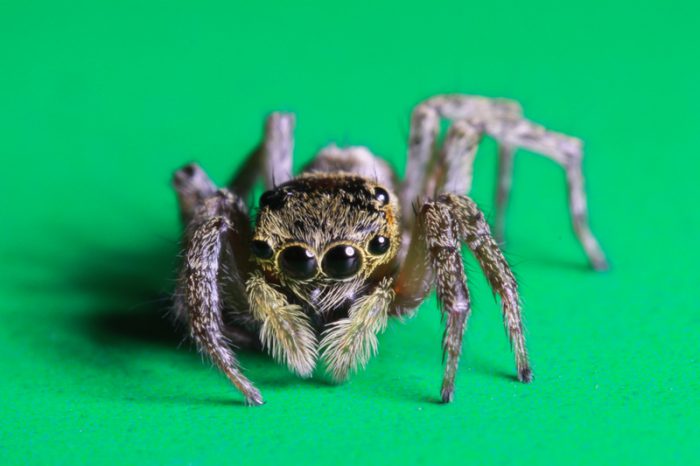Sleep is a pretty basic need. Without enough of it, we not only get cranky, we also find it more difficult to complete tasks or remember things we're supposed to do. In extreme cases, a lack of sleep—or sleep deprivation—can be really bad for our health.
But sleep is also full of mystery. Especially in the case of our dreams. On one hand, we know what dreams are. They're these mini-movies that our brain puts together that play in our minds as we are sleeping. But the more you think about them, the more the questions come up.
Why do we dream? Is it just the brain trying to keep us entertained? Or do dreams have meaning?
And there's another sleep-related question that comes to mind, especially if you happen to own a pet or spend a lot of time with animals.
Do animals dream, too?
Anywhere will do for a snooze ... and a dream? (Getty Embed)
It's a question that is difficult to answer. After all, we can't get inside the head of a dog or cat and actually see what they see as they sleep. But we can observe their bodies (and even brains) as they sleep and compare it to how humans behave. Based on many studies, scientists strongly believe that many animals—including cats, birds, dogs, rats, horses—do dream.
That makes some sense, right? After all, it's not that hard to imagine that a dog or cat can dream. We already see so much of our own emotions in these animals.
But now a new study wants to add another animal to that list of dreamers. Spiders!
Are we convinced? Let's try to untangle the web and understand how a tiny spider could have big dreams.
It all starts with three letters: REM.
What is REM sleep?
Sleeping is a huge part of who we are. And scientists are noticing that human sleep is more similar to the sleep of other animals than we first thought. (Getty Embed)
Sleep has four stages. The first three—called Stage 1, Stage 2, and Stage 3—are just a gradual process of us getting deeper and deeper into sleep. The breathing and heart rate get slower and slower, our limbs get more relaxed. By Stage 3, if someone tries to wake you, it is not a pretty picture!
But the fourth stage, REM sleep, is a totally different thing. Though our eyelids are closed, our eyes twitch quickly from side-to-side (in fact, REM stands for rapid eye movement). Our breathing and heart rate speed back up, almost to the same levels as when we are awake.
And we dream.
Nearly all dreaming occurs during REM sleep. And though you can dream at other times, REM dreams are the most vivid and lifelike. Our body seems to understand this—our arms and legs are actually briefly paralyzed during REM so that we don't act out our dreams! Good idea, body!
Spiders in dreamland
Excellent eyesight makes jumping spider great hunters. Do their eyes also hold clues to dreaming? (Getty Embed)
Most of the studies into whether other animals dream are about looking into their own patterns of REM sleep. But most of those studies have involved looking at other vertebrates—animals whose biology is reasonably similar to humans.
Spiders, on the other hand, are arthropods. So how can scientists tell what is going on?
In a study done at Harvard, a team of researchers filmed and observed 34 different jumping spiders from a species called Evarcha arcuata. At night, they would hang motionless from a strand of web. Sleepy time!
But there were also times when the spiders would begin to twitch. Their legs and abdomen would flinch and shudder. It looked a lot like REM sleep—a moment where the animal was asleep, but also far more active.
In their paper, the scientists wrote, "This report provides direct evidence for an REM sleep-like state in a terrestrial invertebrate–an arthropod–with clear parallels to REM sleep in terrestrial vertebrates."
Look at those peepers
Maybe the most convincing part of the study has to do with the spiders' eyes.
Their eyes don't work the same way are ours do. They can't move around from side-to-side, for example. So much for rapid eye movement, right?
Except that a jumping spider's two largest eyes do have something called retinal tubes inside them. These adjust to allow the animal to focus on different things. Along with the spider's six other smaller eyes, they give them exceptional eyesight. Maybe by watching how the retinal tubes move during sleep, the scientists could observe spiders in REM sleep?

This infrared GIF shows the leg and abdomen twitches of the sleeping spider. You can also see through the spider at its retinal tubes—these are two straight lines in the very middle of the spider's head. (Rosseler et al. PNAS 2022)
This is exactly what the researchers did. They found that whenever there were leg and abdomen twitches, there were rapid retinal movements. Though not every retinal movement had a leg twitch, there definitely was a stage of sleep where the spiders were more 'active'.
Whether or not this is actually REM sleep—and whether spiders are truly dreaming as it happens—is something that will require a lot more study. But we think this is a really cool start!
We'll never look at a spider at night in quite the same way. What might spiders dream about?
 Hi there, you little dreamer! Jumping spiders were used in this study. (ID 31205528 © Mario Madrona Barrera | Dreamstime.com)
Hi there, you little dreamer! Jumping spiders were used in this study. (ID 31205528 © Mario Madrona Barrera | Dreamstime.com)









